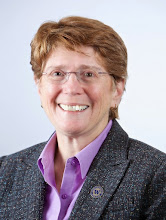The Coase Theorem says that parties will negotiate to an efficient distribution of goods—if they have perfect information and there are no transaction costs. Dru Stevenson takes this basic premise about an idealized economic world and uses it to frame his observations of jury selection, a phase of litigation where negotiation is typically absent: the rules and traditions of voir dire make the transactions costs very high.
Dru Stevenson, Jury Selection and the Coase Theorem (March 4, 2011), available at http://ssrn.com/abstract=1777278.Not really into law and economics? The article is still worth reading for Stevenson's comments on jury selection. For instance:
the peremptory strike system actually maximizes uncertainty about the jury, rather than neutrality or fairness, by allowing lawyers on each side to deselect jurors who seem favorable to their opponent. In other words, we merely remove those whose biases seem most evident. Given the relationship between predictability and settlement, this means the peremptory strike system has a temporary chilling effect on settlements immediately following the voir dire segment of the litigation.Id. at 6.
If you'd like to read more about the Coase Theorem—a lot more—see Steven G. Medema & Richard O. Zerbe, Jr., The Coase Theorem (1999), in Encyclopedia of Law and Economics. This huge, scholarly encyclopedia is on the web, free! By the way, Dick Zerbe, from the UW's Evans School of Public Affairs is an adjunct professor in the law school.
If you think that it would be worthwhile to know a little more about economics and you need an introduction (or a refresher), consider Grady Klein & Yoram Bauman, The Cartoon Introduction to Economics. (This excerpt has a little about the Coase Theorem on page 182.) By the way, Yoram Bauman teaches in the UW's Program on the Environment.

No comments:
Post a Comment